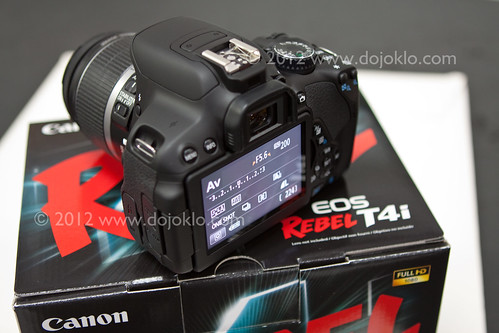Canon Rebel T4i vs. EOS 60D
I first introduced and discussed the new Canon Rebel T4i in this recent post, Introduction the the Canon Rebel T4i. I encourage you to read that first to learn about all the features of the T4i. Then you may be wondering about how to choose between the T4i vs. the Canon EOS 60D, so I go into more detail about that here:
The predecessor to the T4i, the T3i, shared several important features with the 60D including the same 18 MP image sensor and the 63 zone exposure metering mode, both allowing you to get great, high-quality, well exposed images even in challenging lighting situations. However, the T3i lacked a couple critical features that dedicated enthusiast photographers might eventually find that they would need, even if they weren’t ready or knowledgeable enough to use them right away. They might have found that the less accurate autofocus system was eventually not up to their needs and that the slower continuous shooting speed limited the moments they could capture.

As I discussed above, the new Canon Rebel T4i / 600D demonstrates a significant leap in the “trickle-down” trend by borrowing several additional important features from the 60D, including the more accurate all-cross-type 9 point autofocus system and 5 frames per second, faster continuous shooting speed. The fact that both of these cameras, the T4i and 60D, now share numerous key features, it is obviously a challenge to decide between them.
There are still a few features, however, that may help you decide one way or the other. The T4i has added continuous autofocusing while shooting video and a couple new Movie autofocus modes to best make use of this. If you intend to shoot lots of video with your camera, this could be an important deciding factor. The T4i also adds a Touch Screen, allowing you to change settings, navigate menus, and browse through images with iPhone-like multi-touch gestures. This isn’t a vital feature for taking better images, but it may be a convenience issue that makes a difference.
But the 60D still holds some important advantages for those who intend to be serious and dedicated to their photography, and who wish to use their camera as a versatile tool to fit with how they shoot. The 60D still offers a bigger and brighter viewfinder, additional external buttons and controls which makes changing camera settings on the fly much quicker and easier. For example it has the metering mode, autofocus mode, etc. buttons right on top for easy access, plus the large Quick Control Dial on the rear of the camera to quickly change exposure compensation or to help with changing settings and rapidly moving through menus, and the all-important AF-ON button allowing more control over autofocus operation.
The 60D also has a slightly more rugged build than the T4i and some amount of weatherproofing seals, where the T4i basically has none. Even more importantly, the 60D boasts additional Custom Function options, which will allow you to customize the camera and its functions to operate exactly how you want them to: Safety Shift, Bracketing Sequence, ISO increments at 1/2 or 1/3 rather than full stops, dial direction reversal. While some of these options may not seem important to the casual user, the heavy-duty user will find them indispensable in increasing their efficiency and deceasing their aggravation. And due to some of the additional features/ controls and stronger build, the body of the 60D is larger, feels sturdier, and is better balanced with the larger heavier lenses that a more dedicated photographer will likely be using sooner or later.

